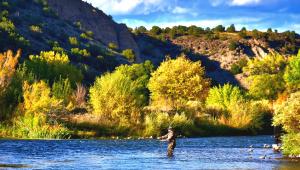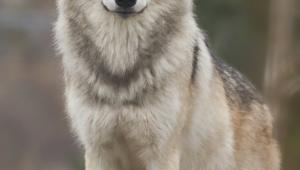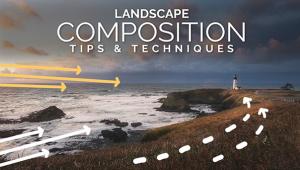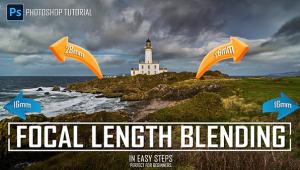There is some kind of old touch to this camera. The design as well as the overall taste is really old school. - J. Kale Flagg
Shutterbug’s Exclusive photokina Coverage; Formats Aplenty, Printer/Camera Workflows, And A 3D Comeback Page 2
The other pronounced “new” format, the so-called Leica Pro Format, is actually a 45x30mm sensor, yielding 37.5 megapixels, compliments of Kodak’s Imaging Sensor group. The camera to hold that sensor is the Leica S2, a complete system camera (or it will be when it starts rolling out in the summer of 2009) that will include various lenses, including a 70mm f/2.5, a 120mm f/2.5, and a 24mm f/2.8. The all-metal body will offer two shutters, one a leaf and one a focal plane, so both studio and field photographers will benefit. It is, I’ll grant, a true D-SLR form, but more in the shape and heft of a Pentax 67—if you remember that camera—which oddly enough was dubbed the “Texas Leica.”
It’s off to the races in the pro group with one seeming to outdo the others in the megapixel race. Another Kodak sensor cooperative effort is with Hasselblad in the H3DII-50, the top model of Hasselblad’s H3DII family and their fourth-generation medium format camera. Twice the physical size of the largest 35mm D-SLR image sensor, the 50 million pixel KAF-50100 is 48x36mm. But the megapixel race went further with Phase One’s 60.5-megapixel back that delivers an ISO range of ISO 50-1600.
This might seem like so much marketing madness, but the evolution in size and resolution has other implications. While sensors get bigger, or pile on the megapixels, one thing is becoming apparent to scientists—how it is possible that the next generation of sensors might well outstrip the current crop of glass. There will be need for refinements in lens making, or image processing, or in both done cooperatively, so that the sensors do not over-resolve beyond the point that current glass can handle. Where is that boundary? Some say we are fast approaching it, given the super megapixel sensors, and that future software might not only deal with lens correction, but lens enhancement to bring the glass up to snuff. In other words, optics and software will meet and image processing and lens technology will go hand in hand.
Actually there is a new sensor to discuss—Fujifilm announced new developments in their “Super CCD EXR” sensor, which, among other things, can capture two images simultaneously, one at high sensitivity and the other at low sensitivity. The processor then generates a photo that has the best of both ISO worlds, an image with supposed higher dynamic range. This is done, I am told, by controlling the time in which the charge accumulates at the photo diode (pixel) site. Unlike their previous sensor—the Super CCD SR that recorded highlights and shadows in a dual fashion using pixels with high and low sensitivity—the EXR uses all the same size imaging elements and manipulates the exposure time on each site, depending on the highlight and shadow distribution in the image. This “switchable sensor” is said to change to suit the lighting conditions and subject.
3D Digital
I suppose it was inevitable that someone came up with a digital 3D option, and this year Fujifilm met the challenge. The new camera and printing system starts with a newly developed chip Fujifilm dubs the “RP (Real Photo) Processor 3D.” It synchronizes data passed to it by the dual sensors in the FinePix 3D camera and blends the images, for stills and movies(!). The camera has a “built-in 3D auto” setup that is said to determine the best shooting conditions for both sensors. To snag the image there are twin Fujinon lenses; to view it there is a new 8.4” 3D Photo Frame that allows you to view in both 2D and 3D, the latter without special glasses thanks to a light direction control module in back of the frame that controls light to right and left eye direction.
 |
|
|
What about prints? Fuji has drawn on their minilab experience to develop a 3D printing system using what they dub a “fine pitch” lenticular sheet, much like the old Nimslo prints in appearance. The samples we saw were reminiscent of past 3D images, and while it certainly will appeal to those few who miss the 3D prints of the past it seems more a passing fancy to me. But Fujifilm also foresees using this twin-lens technology for more than just 3D: for simultaneous wide and tele shooting, ultra-wide panoramas, and shooting movies and stills at the same time, without pause. Any takers?
I also have to put Kodak’s announcement of a new generation of Ektar color negative film, said to be the finest grain color negative film ever made, at the top of my highlight list. The new ISO 100 film incorporates Kodak Vision Motion Picture Film Technology to achieve its impressive look. Way to go, EK, and we look forward to testing it soon.
 |
|
|
But if anybody is shooting film, at least in the amateur sector, it’s news to Europeans, at least, who seem to brandish digital and cell phone cameras at every possible occasion for moments sublime, ridiculous, and mundane.
That said, there’s lots more to consider, from lighting to memory cards to new D-SLRs to high-end digicams. While some product may be on the shelves for the coming season, others are more twinkles in some engineers’ eyes. You can rest assured that we will be testing many of the top products in these reports in issues to come.
- Log in or register to post comments

































